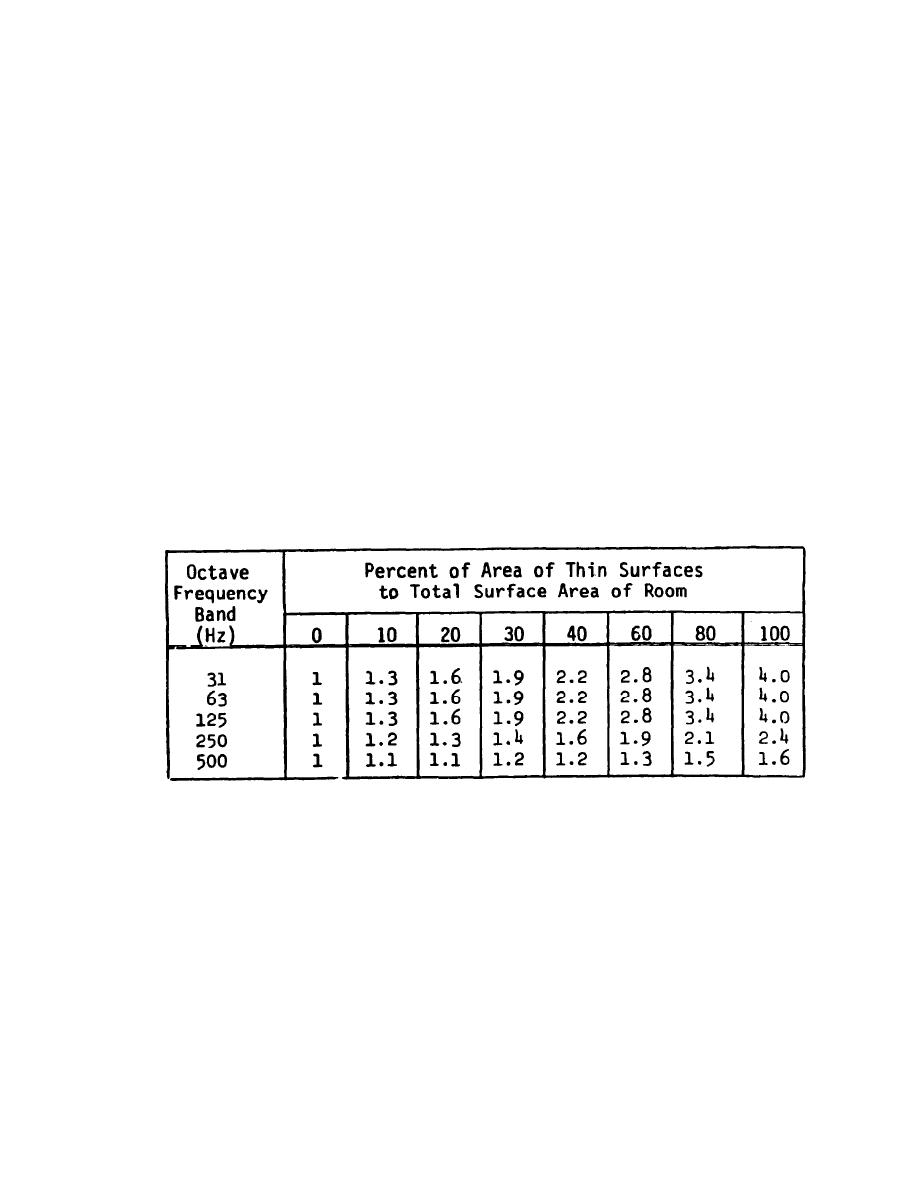
TM 5-805-4/AFJMAN 32-1090
values for the 6-ft. distance and all the column 3
should be 91 - 5 = 86 dB, which is confirmed in
the column 8 of table 3-4 for the 1000-Hz octave
values of R1. These REL SPL values are given in
band. Hint: When the net movement is down on
column 4. Next, the REL SPLD2R2 values are
figure 3-1, there is a reduction from "starting
estimated for the 20-foot distance and all the
SPL" to "ending SPL"; when the net movement is
column 5 values of R2. These REL SPL values are
u p on figure 3-1, there is an increase from
given in column 6. Column 7 shows the value of
"starting SPL to ending SPL." For convenience in
the difference (REL SPLD1Rl - REL SPLD2R2); it
using figure 3-1, equation 3-2 is reproduced in the
is necessary here to be extremely careful to pre-
space above the graph on figure 3-1. It should be
serve the correct signs. Finally, column 8 gives the
remembered that this equation is to be used when
value of SPL at D2, R2, which is equal to the
SPL is given for one set of conditions and SPL is
column 2 value minus the column 7 value, again,
wanted for another set of conditions.
being careful with the signs. To check the calcula-
b. Sound power level given. Suppose a manufact-
tions, one should go back to figure 5-1 and follow
urer submits the PWL data given in column 2 of
one specific conversion, such as the 1000-Hz
table 3-6 for a particular centrifugal compressor.
change of conditions. A pencil mark is placed at
An engineer intends to install this compressor in a
the junction of D1 = 6 ft. and R1 = 500 ft.2, and it
room having the R values shown in column 3, and
is noted that the measured SPL was 91 dB for that
needs to know the SPL at a 20-foot distance.
condition. Now, as one moves out to the junction of
Column 4 shows the REL SPL values from figure
D2 = 20 ft. and R2 = 1200 ft.2, it is observed that
3-1 for the 20-foot distances and the various Room
there is a movement down the graph by 5 dB. This
Constants. Column 5 then gives the calculated
means there is a reduction of 5 dB from the initial
SPL values. For convenience to the user, equation
3-3 is also reproduced at the top of figure 3-1.
condition of 91 dB. Therefore, the end condition
Table 3-4. Low Frequency Multipliers For Room Constants.
3-7


 Previous Page
Previous Page
